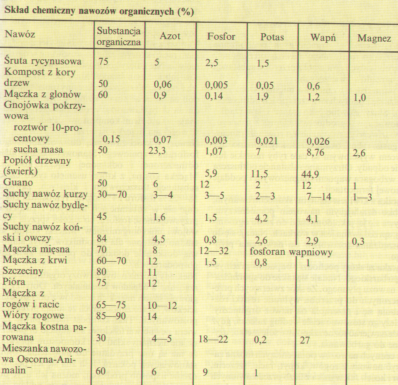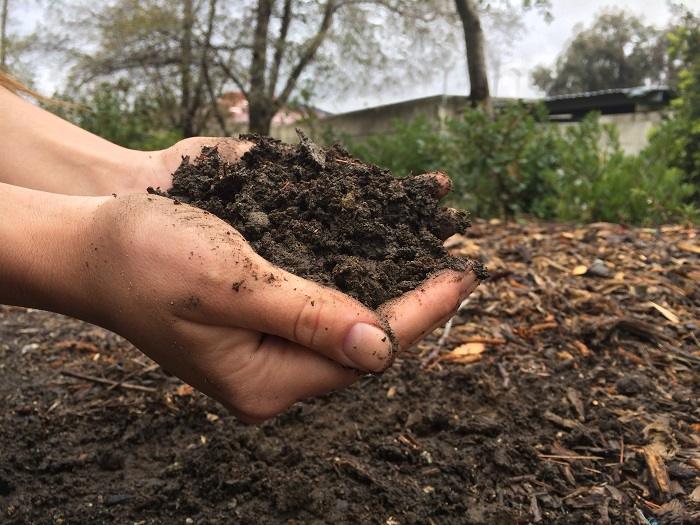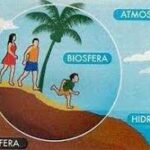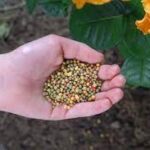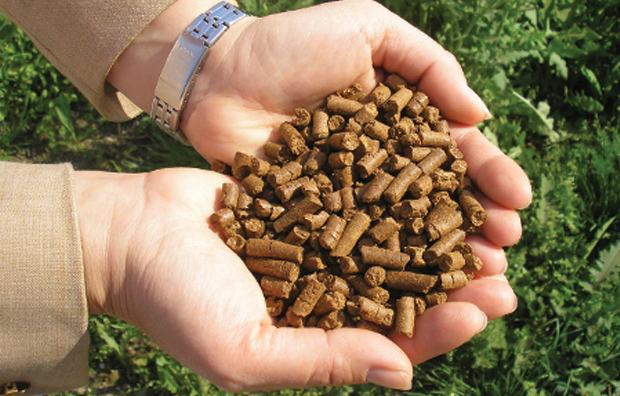 Nawozy pochodzenia zwierzęcego.
Nawozy pochodzenia zwierzęcego.
Wśród nawozów organicznych pochodzenia zwierzęcego rozróżniamy nawozy otrzymane z przerobu całych zwierząt i z przerobu substancji lub narządów zwierzęcych.
Pierwsza grupa to mączka mięsna, którą sporządza się z padłych zwierząt (po ich odtłuszczeniu). Służy głównie jako pasza i jest rzadko stosowana w ogrodnictwie. Oprócz cennego, prawdziwego guana znane jest również francuskie guano rybne, zwane też Biskaya-Guano. Surowcem wyjściowym są całe ryby morskie lub rybie odpady. Otrzymane substancje odtłuszcza się, wzbogaca wapnem magnezowym i poddaje tlenowej fermentacji.
Mączka z krwi jest cennym, skoncentrowanym, szybko działającym nawozem pomocniczym. Używa się jej jako domieszki do ziemi ogrodniczej; sprzedawana jest w workach. Nadaje się do sporządzania roztworów do nawożenia płynnego.
Mączka ze skóry pochodzi z odpadów przemysłu garbarskiego. Nadaje się także do sporządzania nawozu płynnego. Ze skór zwierzęcych przeznaczonych do przerobu wybrane resztki rozdrabnia się i przerabia na nawóz organiczny. Należy go stosować ściśle według zaleceń, gdyż może zawierać różne szkodliwe sole metali, używane do garbowania.
Do cennych nawozów pomocniczych można zaliczyć nawozy z rogów, kopyt, racic, szczecin, piór i kości. Jak wynika z liczb przedstawionych w załączonej tabeli, materiały te zawierają dużo azotu, kości zaś — podobnie jak kurzeniec — więcej fosforu.
Mączka rogowa jest szybko działającym nawozem i nadaje się do stosowania bezpośrednio na
grządki lub do sporządzania specjalnej ziemi ogrodniczej.
Grys rogowy nie jest tak szybko przetwarzany przez organizmy glebowe. Dlatego na jego działanie stymulujące wzrost roślin, zwłaszcza przy chłodnej pogodzie, trzeba niestety poczekać dłużej.
Wióry rogowe dodaje się do pryzm kompostowych lub stosuje w formie gnojówki do nawożenia płynnego. Aby ułatwić mielenie, niektóre firmy prażą twarde rogi. W tym procesie uwsteczniają się białka, które później wolniej się rozkładają, co wpływa na ożywienie gleby. Dla działkowicza wszystkie nawozy rogowe są bardzo wygodne, gdyż można je łatwo stosować w dowolny sposób.
Nawozy z włosów i szczeciny świńskiej z dodatkiem racic i skóry są rzadko stosowane w ogrodnictwie. Nie należy kompostować świeżych włosów lub szczecin bezpośrednio po otrzymaniu ich z rzeźni. Wysuszone szczeciny można łatwo i dobrze zmieszać z masą kompostową. Ze względu na dużą zawartość azotu znacząco poprawiają jakość ziemi kompostowej. Podobne właściwości ma mączka z pierza.
Nawozy z kości zawierają dużo organicznego fosforanu wapniowego. Stanowi on około 30% odtłuszczonej i odklejonej mączki kostnej. Mączka kostna, z której usunięto tylko część substancji tłuszczowych i kleistych, zawiera 18—22% fosforu i 4% azotu. Ten ostatni znajduje się w substancjach kleistych i zwiększa przyswajalność fosforu, co z kolei sprzyja rozwojowi mikroorganizmów. Mączki kostne są trudno dostępne dla ogrodników, gdyż stanowią doskonałe dodatki do pasz dla zwierząt gospodarczych.
Niekiedy można nabyć nawozy organiczne sporządzane z odpadów komunalnych. Dotyczy to głównie śmieci miejskich i osadów z oczyszczalni ścieków, często zmieszanych ze sobą i przekompostowanych. Taki kompost niewątpliwie zawiera pewne wartościowe substancje organiczne, ale nieznany skład tych kompostów sprawia, że nie są one przydatne do nawożenia roślin stanowiących pokarm. Jeśli zna się ich pochodzenie i sposób produkcji, można ich użyć do nawożenia trawników. Nawozy te nadają się do nawożenia terenów zielonych w mieście, przy zazielenianiu pasów wzdłuż ulic i torów kolejowych, rekultywacji, np. wyrobisk żwirowych, kamieniołomów, a także do nawożenia terenów zalesianych. Kompostem z odpadów miejskich, nie polecanym jednak na działki i do ogrodów, jest w Polsce kompost „Dano” uzyskiwany metodą biotermiczną
Skład chemiczny ważniejszych nawozów organicznych przedstawiono w tabeli.
